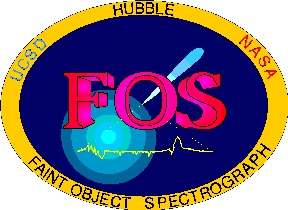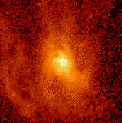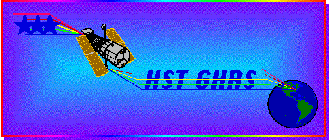 HST Projects at CASS,
UCSD
HST Projects at CASS,
UCSD HST Projects at CASS,
UCSD
HST Projects at CASS,
UCSD
The multi-channel Digicon
photon detectors used in the first generation HST spectrographs were
invented and developed at
the Center for Astrophysics and Space Sciences (CASS)
at the University of California at San Diego (UCSD).
Four of these detectors are used on
two instruments, the UCSD
Faint Object Spectrometer (FOS),
and the Goddard High Resolution Spectrometer
(GHRS), on the Hubble Space
Telescope (HST/STScI).
UCSD's
 Group
Group

The FOS GTO data analysis project ( M. Burbidge, PI)was headquartered at UCSD and UCSD investigators continue to be active in HST research programs. Among the important results from the FOS team was conclusive evidence for the presence of a massive black hole in the nucleus of the nearby elliptical galaxy, M87.
 M87 Core & Accretion
Disk
M87 Core & Accretion
Disk
 Blue- and Red- shifted
spectra
Blue- and Red- shifted
spectra
Shown above is a sample of the spectrum obtained by the UCSD Faint Object Spectrograph onboard the Hubble Space Telescope that provided proof of the existence of black holes. Also available is the full press release photo (180k GIF or 80k JPEG).


GHRS Support Group at CASS, UCSD



Comments and questions on these pages via mailto:Professor H.E.Smith